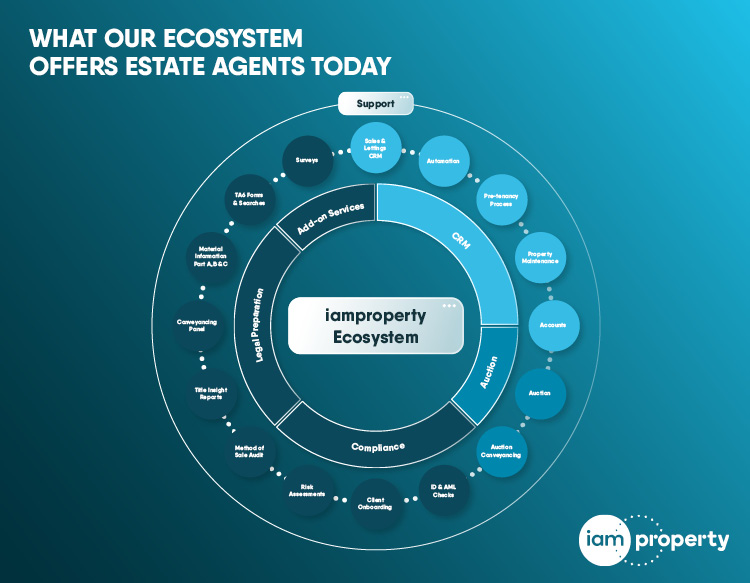Across all sectors it has recorded 562,550 businesses in 'significant financial distress' with a 139 per cent uplift in County Court Judgments in the past year.
However, despite this gloomy total, the overall number of businesses in significant financial distress has fallen 14 per cent since earlier this year.
Begbies Traynor says County Court Judgements are often a bellweather for future insolvency.
Official data shows there were 9,101 CCJs lodged against companies during Q3 2020, rising to 21,769 during Q3 2021, a 139 per cent uplift.
This acceleration in CCJ's was also evident between Q2 and Q3 2021 with a 51 per cent increase.
The latest official figures show that court activity is picking up as creditors, become more aggressive in chasing debts.
Top 10 Distressed Sectors
1. Support Services - 87,694
2. Construction - 72,465
3. Real Estate & Property - 70,552
4. Professional Services - 39,095
5. Telecoms - 36,307
6. General Retailers - 35,107
7. Health & Education - 31,810
8. Media - 23,499
9. Bars & Restaurants - 20,552
10. Manufacturing - 20,269
Distressed Companies by Region
1. London - 149,784
2. South East - 101,690
3. Midlands - 66,527
4. North West - 54,350
5. South West - 39,870
6. East of England - 38,829
7. Yorkshire - 32,995
8. Scotland - 28,615
9. Wales - 16,769
10. North East - 10,974
11. Northern Ireland - 8,095
Julie Palmer, a partner at Begbies Traynor, says: "The UK economy - which remains one large recession short of its pre-COVID trajectory4 - is quickly recovering. However, it may prove to be transitory as rising CCJ figures are a cause for real concern.
"Despite the summer economic boom, systematic problems remain, and some businesses are encountering difficulties in paying back government COVID loans. However, Inflation, energy costs and labour availability are risk factors for many of these businesses, particularly if they are unable to pass these costs on to their customers.
"Whilst many businesses have returned to a sense of normality, history suggests that high levels of debts and subsequent overtrading could eventually take their toll on these businesses."
And Ric Traynor, executive chairman of the insolvency consultancy, adds: “More worrying has been the 44 per cent rise in small business defaults for loans to corporations as published in the Bank of England's latest credit conditions survey. This trend is backed up by our own empirical evidence.
“Every week as a business we have hundreds of conversations with distressed businesses and their advisers, and three clear trends are now emerging. Firstly, there is real concern amongst many SME directors about their ability to pay back government backed bounce back loans with many directors exploring short to medium term insolvency options.
“Secondly many directors say that HMRC is taking an increasingly aggressive line in chasing debts, particularly those who have defaulted on time to pay arrangements and thirdly many businesses are coming under considerable pressure from landlords chasing debts.
"These risks combined with the withdrawal of government support measures and protection will undoubtedly see an acceleration in insolvency rates into 2022.”

















%20-%20IMAGE%20Client%20Accounting%20%E2%80%93%20what%20are%20your%20options.jpg)


.png)
.png)
.png)
%20(002).png)






%20(002).jpg)





%20A%20property%20tale%20for%20our%20times.png)








Join the conversation
Jump to latest comment and add your reply
Why does it matter how well the housing market is doing, the issue is not selling houses, the issue is how much agents now charge that make it no longer viable to continue as a business.
As stated previously on EstateAgencyToday I am getting out of the business after 20 years because I make less now that I did 20 years ago with my fees now in line with the hybrids (or slightly below to try and win the instruction) yet my expenditure for the portals, rent etc has gone through the roof.
Maybe do a bit of actual journalism and start asking WHY a lot of agents are going to the wall when the housing market is buoyant, it is because they are not winning enough instructions or the fees they are making is no longer enough to survive on.
We have a state of the art website that competes agains the best hybrid websites, portals, accompanied viewings, videos etc but the usual scenario is the seller states they can sell their house for £999 and be on zoopla and rightmove too so why pay more than what they need to. Yes some sellers will still go with you as they know the service you provide as a high street agent and being their is a welcome addition and will pay for this but with the way the economy is, fuel, gas/electric all going through the roof if a seller things they can save £500-1000 on sales fee they are going to take it.
Unless you have really high volume of take ones you cannot survive on a fee below £999 and this is the problem and issue.
As I say I am leaving the industry in the next few months and can't wait to see the back of it.
Years and years of Purple bricks forcing the prices down and Rightmove putting the prices up, yet many signed up to Boomin and many remain with Rightmove, WHOS fault is it really?
Since 1985 when I started in the industry the amount of estate agents has increased by 500%, the amount of housing stock 112%. Typically 1.2M or so properties complete each year, 85% being sold by an agency of some kind. Mathematically if all agents in the UK were spread out, you would find an estate agent every 2.4 miles. It is simple mathematics, if the cake has a finite size and it is sliced by an increasing amount of agents, then each agent gets a smaller slice. Yes in each area you have dominant players with more market share, but in the period 1985 to say 1998 any of the branches I had had a typical register of 80 to 120 properties for sale, and maybe we were competing with 25 agents geographically, now that would be 60, including hybrids and onliners. Increasingly we will see also the rise of SBV - sale by vendor as the tech savvy younger generation choose to swerve the usual ways of buying selling and letting. It is just the creep of digital, which has crept into Fintech and banking.
Is et up in letting, in a small way, twenty five years ago. I soon learnt that estate agents were a problem for me and their effect on my activities had to be controlled. That is just business. Time wasting while they looked for a better offer, either the agent and or the seller, was just wasting my time. I was not prepared to loose time and money on solicitors and financial peoples' costs when I had to withdraw. That is history an no longer relevant to me.
Now I am a seller.My flats are worth around the price of a good car! I tried an estate recently but his business costs on such a low cost item were absolutely ridiculous. Not his fault of course, just regulation and tax. He tried to rob me as well by creating a fictitious buyer who could not afford to going rate.
My conclusion is that the only way to sell is online auction with guaranteed, "No nonsense". With a few more regulations even that will be not worth the trouble. My descendants certainly don't want them. With costs and all the tenants rights plus band C insulation they have a negative earnings potential. The freeholds belong to the flat owners.
The Golden Goose of small residential property has vanished for ever.
Please login to comment